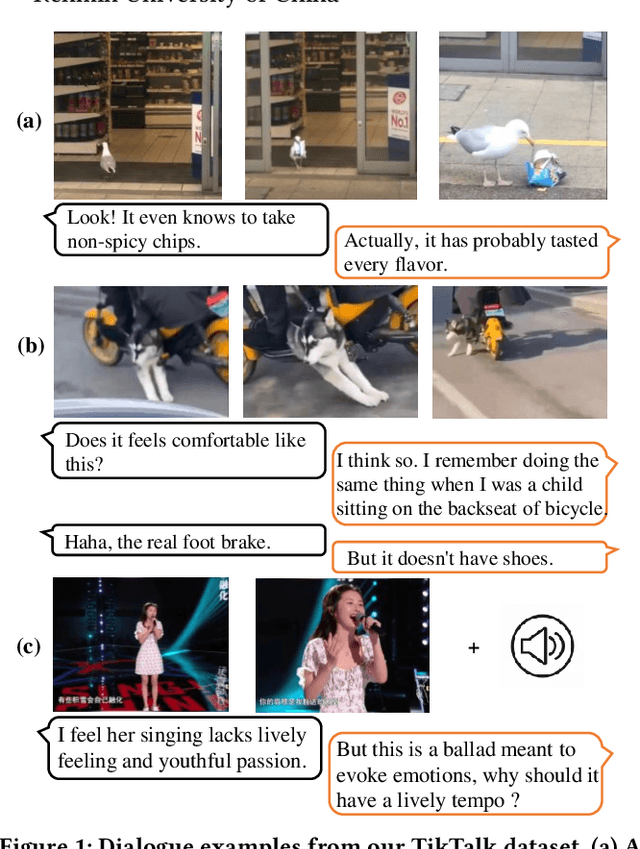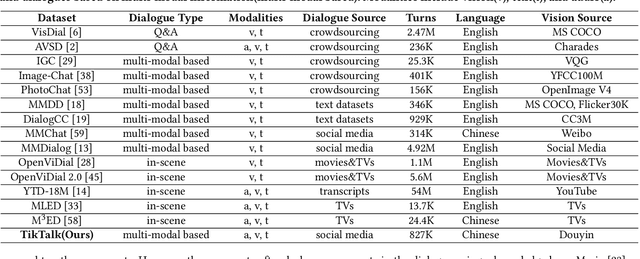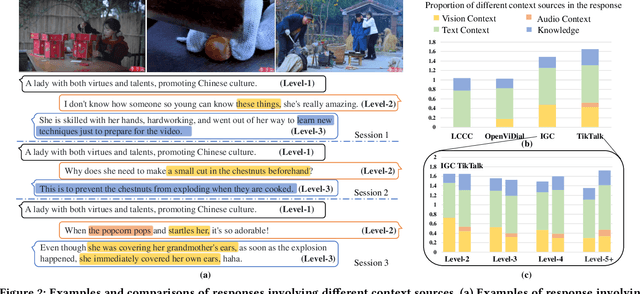Wenke Xia
Phoenix: A Motion-based Self-Reflection Framework for Fine-grained Robotic Action Correction
Apr 20, 2025Abstract:Building a generalizable self-correction system is crucial for robots to recover from failures. Despite advancements in Multimodal Large Language Models (MLLMs) that empower robots with semantic reflection ability for failure, translating semantic reflection into how to correct fine-grained robotic actions remains a significant challenge. To address this gap, we build the Phoenix framework, which leverages motion instruction as a bridge to connect high-level semantic reflection with low-level robotic action correction. In this motion-based self-reflection framework, we start with a dual-process motion adjustment mechanism with MLLMs to translate the semantic reflection into coarse-grained motion instruction adjustment. To leverage this motion instruction for guiding how to correct fine-grained robotic actions, a multi-task motion-conditioned diffusion policy is proposed to integrate visual observations for high-frequency robotic action correction. By combining these two models, we could shift the demand for generalization capability from the low-level manipulation policy to the MLLMs-driven motion adjustment model and facilitate precise, fine-grained robotic action correction. Utilizing this framework, we further develop a lifelong learning method to automatically improve the model's capability from interactions with dynamic environments. The experiments conducted in both the RoboMimic simulation and real-world scenarios prove the superior generalization and robustness of our framework across a variety of manipulation tasks. Our code is released at \href{https://github.com/GeWu-Lab/Motion-based-Self-Reflection-Framework}{https://github.com/GeWu-Lab/Motion-based-Self-Reflection-Framework}.
Depth Helps: Improving Pre-trained RGB-based Policy with Depth Information Injection
Aug 09, 2024



Abstract:3D perception ability is crucial for generalizable robotic manipulation. While recent foundation models have made significant strides in perception and decision-making with RGB-based input, their lack of 3D perception limits their effectiveness in fine-grained robotic manipulation tasks. To address these limitations, we propose a Depth Information Injection ($\bold{DI}^{\bold{2}}$) framework that leverages the RGB-Depth modality for policy fine-tuning, while relying solely on RGB images for robust and efficient deployment. Concretely, we introduce the Depth Completion Module (DCM) to extract the spatial prior knowledge related to depth information and generate virtual depth information from RGB inputs to aid policy deployment. Further, we propose the Depth-Aware Codebook (DAC) to eliminate noise and reduce the cumulative error from the depth prediction. In the inference phase, this framework employs RGB inputs and accurately predicted depth data to generate the manipulation action. We conduct experiments on simulated LIBERO environments and real-world scenarios, and the experiment results prove that our method could effectively enhance the pre-trained RGB-based policy with 3D perception ability for robotic manipulation. The website is released at https://gewu-lab.github.io/DepthHelps-IROS2024.
KOI: Accelerating Online Imitation Learning via Hybrid Key-state Guidance
Aug 06, 2024



Abstract:Online Imitation Learning methods struggle with the gap between extensive online exploration space and limited expert trajectories, which hinder efficient exploration due to inaccurate task-aware reward estimation. Inspired by the findings from cognitive neuroscience that task decomposition could facilitate cognitive processing for efficient learning, we hypothesize that an agent could estimate precise task-aware imitation rewards for efficient online exploration by decomposing the target task into the objectives of "what to do" and the mechanisms of "how to do". In this work, we introduce the hybrid Key-state guided Online Imitation (KOI) learning approach, which leverages the integration of semantic and motion key states as guidance for task-aware reward estimation. Initially, we utilize the visual-language models to segment the expert trajectory into semantic key states, indicating the objectives of "what to do". Within the intervals between semantic key states, optical flow is employed to capture motion key states to understand the process of "how to do". By integrating a thorough grasp of both semantic and motion key states, we refine the trajectory-matching reward computation, encouraging task-aware exploration for efficient online imitation learning. Our experiment results prove that our method is more sample efficient in the Meta-World and LIBERO environments. We also conduct real-world robotic manipulation experiments to validate the efficacy of our method, demonstrating the practical applicability of our KOI method.
Learning Manipulation by Predicting Interaction
Jun 01, 2024



Abstract:Representation learning approaches for robotic manipulation have boomed in recent years. Due to the scarcity of in-domain robot data, prevailing methodologies tend to leverage large-scale human video datasets to extract generalizable features for visuomotor policy learning. Despite the progress achieved, prior endeavors disregard the interactive dynamics that capture behavior patterns and physical interaction during the manipulation process, resulting in an inadequate understanding of the relationship between objects and the environment. To this end, we propose a general pre-training pipeline that learns Manipulation by Predicting the Interaction (MPI) and enhances the visual representation.Given a pair of keyframes representing the initial and final states, along with language instructions, our algorithm predicts the transition frame and detects the interaction object, respectively. These two learning objectives achieve superior comprehension towards "how-to-interact" and "where-to-interact". We conduct a comprehensive evaluation of several challenging robotic tasks.The experimental results demonstrate that MPI exhibits remarkable improvement by 10% to 64% compared with previous state-of-the-art in real-world robot platforms as well as simulation environments. Code and checkpoints are publicly shared at https://github.com/OpenDriveLab/MPI.
SAM-E: Leveraging Visual Foundation Model with Sequence Imitation for Embodied Manipulation
May 30, 2024



Abstract:Acquiring a multi-task imitation policy in 3D manipulation poses challenges in terms of scene understanding and action prediction. Current methods employ both 3D representation and multi-view 2D representation to predict the poses of the robot's end-effector. However, they still require a considerable amount of high-quality robot trajectories, and suffer from limited generalization in unseen tasks and inefficient execution in long-horizon reasoning. In this paper, we propose SAM-E, a novel architecture for robot manipulation by leveraging a vision-foundation model for generalizable scene understanding and sequence imitation for long-term action reasoning. Specifically, we adopt Segment Anything (SAM) pre-trained on a huge number of images and promptable masks as the foundation model for extracting task-relevant features, and employ parameter-efficient fine-tuning on robot data for a better understanding of embodied scenarios. To address long-horizon reasoning, we develop a novel multi-channel heatmap that enables the prediction of the action sequence in a single pass, notably enhancing execution efficiency. Experimental results from various instruction-following tasks demonstrate that SAM-E achieves superior performance with higher execution efficiency compared to the baselines, and also significantly improves generalization in few-shot adaptation to new tasks.
Kinematic-aware Prompting for Generalizable Articulated Object Manipulation with LLMs
Nov 08, 2023



Abstract:Generalizable articulated object manipulation is essential for home-assistant robots. Recent efforts focus on imitation learning from demonstrations or reinforcement learning in simulation, however, due to the prohibitive costs of real-world data collection and precise object simulation, it still remains challenging for these works to achieve broad adaptability across diverse articulated objects. Recently, many works have tried to utilize the strong in-context learning ability of Large Language Models (LLMs) to achieve generalizable robotic manipulation, but most of these researches focus on high-level task planning, sidelining low-level robotic control. In this work, building on the idea that the kinematic structure of the object determines how we can manipulate it, we propose a kinematic-aware prompting framework that prompts LLMs with kinematic knowledge of objects to generate low-level motion trajectory waypoints, supporting various object manipulation. To effectively prompt LLMs with the kinematic structure of different objects, we design a unified kinematic knowledge parser, which represents various articulated objects as a unified textual description containing kinematic joints and contact location. Building upon this unified description, a kinematic-aware planner model is proposed to generate precise 3D manipulation waypoints via a designed kinematic-aware chain-of-thoughts prompting method. Our evaluation spanned 48 instances across 16 distinct categories, revealing that our framework not only outperforms traditional methods on 8 seen categories but also shows a powerful zero-shot capability for 8 unseen articulated object categories. Moreover, the real-world experiments on 7 different object categories prove our framework's adaptability in practical scenarios. Code is released at \href{https://github.com/GeWu-Lab/LLM_articulated_object_manipulation/tree/main}{here}.
Robust Cross-Modal Knowledge Distillation for Unconstrained Videos
Apr 27, 2023Abstract:Cross-modal distillation has been widely used to transfer knowledge across different modalities, enriching the representation of the target unimodal one. Recent studies highly relate the temporal synchronization between vision and sound to the semantic consistency for cross-modal distillation. However, such semantic consistency from the synchronization is hard to guarantee in unconstrained videos, due to the irrelevant modality noise and differentiated semantic correlation. To this end, we first propose a \textit{Modality Noise Filter} (MNF) module to erase the irrelevant noise in teacher modality with cross-modal context. After this purification, we then design a \textit{Contrastive Semantic Calibration} (CSC) module to adaptively distill useful knowledge for target modality, by referring to the differentiated sample-wise semantic correlation in a contrastive fashion. Extensive experiments show that our method could bring a performance boost compared with other distillation methods in both visual action recognition and video retrieval task. We also extend to the audio tagging task to prove the generalization of our method. The source code is available at \href{https://github.com/GeWu-Lab/cross-modal-distillation}{https://github.com/GeWu-Lab/cross-modal-distillation}.
Revisiting Pre-training in Audio-Visual Learning
Feb 17, 2023Abstract:Pre-training technique has gained tremendous success in enhancing model performance on various tasks, but found to perform worse than training from scratch in some uni-modal situations. This inspires us to think: are the pre-trained models always effective in the more complex multi-modal scenario, especially for the heterogeneous modalities such as audio and visual ones? We find that the answer is No. Specifically, we explore the effects of pre-trained models on two audio-visual learning scenarios: cross-modal initialization and multi-modal joint learning. When cross-modal initialization is applied, the phenomena of "dead channel" caused by abnormal Batchnorm parameters hinders the utilization of model capacity. Thus, we propose Adaptive Batchnorm Re-initialization (ABRi) to better exploit the capacity of pre-trained models for target tasks. In multi-modal joint learning, we find a strong pre-trained uni-modal encoder would bring negative effects on the encoder of another modality. To alleviate such problem, we introduce a two-stage Fusion Tuning strategy, taking better advantage of the pre-trained knowledge while making the uni-modal encoders cooperate with an adaptive masking method. The experiment results show that our methods could further exploit pre-trained models' potential and boost performance in audio-visual learning.
Balanced Audiovisual Dataset for Imbalance Analysis
Feb 14, 2023



Abstract:The imbalance problem is widespread in the field of machine learning, which also exists in multimodal learning areas caused by the intrinsic discrepancy between modalities of samples. Recent works have attempted to solve the modality imbalance problem from algorithm perspective, however, they do not fully analyze the influence of modality bias in datasets. Concretely, existing multimodal datasets are usually collected under specific tasks, where one modality tends to perform better than other ones in most conditions. In this work, to comprehensively explore the influence of modality bias, we first split existing datasets into different subsets by estimating sample-wise modality discrepancy. We surprisingly find that: the multimodal models with existing imbalance algorithms consistently perform worse than the unimodal one on specific subsets, in accordance with the modality bias. To further explore the influence of modality bias and analyze the effectiveness of existing imbalance algorithms, we build a balanced audiovisual dataset, with uniformly distributed modality discrepancy over the whole dataset. We then conduct extensive experiments to re-evaluate existing imbalance algorithms and draw some interesting findings: existing algorithms only provide a compromise between modalities and suffer from the large modality discrepancy of samples. We hope that these findings could facilitate future research on the modality imbalance problem.
TikTalk: A Multi-Modal Dialogue Dataset for Real-World Chitchat
Jan 14, 2023



Abstract:We present a novel multi-modal chitchat dialogue dataset-TikTalk aimed at facilitating the research of intelligent chatbots. It consists of the videos and corresponding dialogues users generate on video social applications. In contrast to existing multi-modal dialogue datasets, we construct dialogue corpora based on video comment-reply pairs, which is more similar to chitchat in real-world dialogue scenarios. Our dialogue context includes three modalities: text, vision, and audio. Compared with previous image-based dialogue datasets, the richer sources of context in TikTalk lead to a greater diversity of conversations. TikTalk contains over 38K videos and 367K dialogues. Data analysis shows that responses in TikTalk are in correlation with various contexts and external knowledge. It poses a great challenge for the deep understanding of multi-modal information and the generation of responses. We evaluate several baselines on three types of automatic metrics and conduct case studies. Experimental results demonstrate that there is still a large room for future improvement on TikTalk. Our dataset is available at \url{https://github.com/RUC-AIMind/TikTalk}.
 Add to Chrome
Add to Chrome Add to Firefox
Add to Firefox Add to Edge
Add to Edge